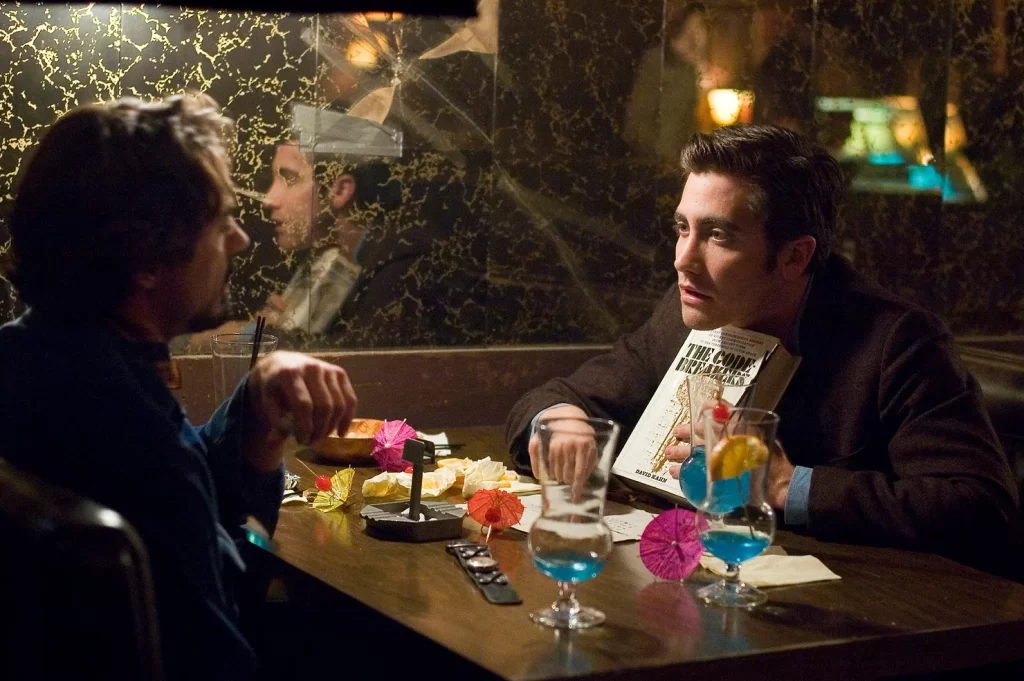I’ll just say this about The Batman: I loved it. But obviously, this is a much different ideation of the Batman/Bruce Wayne character. There’s a brooding Nirvana B-side sprinkled into the trailer and into the film itself—twice. This is the The Last Temptation of Christ of Batman movies. We’re dealing with the human side of both Batman and Bruce Wayne. This Batman miscalculates. In voice-over, he talks to us. He convinces us to like him as a person before we like him as a superhero. And he is a scary-ass Batman. I’ve never been scared of Batman until now. To me, he is like a constructive version of Travis Bickle. He diaries. He is displeased with his city. There is so much scum on the streets. Crime everywhere. He wants to fix it. But he doesn’t know how to yet. As someone pointed out to me, “We are watching his inexperience as the Caped Crusader, and his growing skills as Batman will be important to watch over the sequels.”
If you revisit the portrayals by Michael Keaton, Val Kilmer or even Christian Bale, Bruce Wayne is a high-brow stud-old-money, cocky, flirtatious. But Pattinson’s Bruce is searching for something else beyond the superficial. And the filmmaker, Matt Reeves, leans into this aspect of the character and leads with it. It makes this portrayal so different. This Batman is conducting a social experiment on his hometown. He doesn’t want to meet with accountants or go to charity balls. He doesn’t trust Alfred nor does he fully appreciate Alfred’s role. In fact, it seems this Bruce looks at Alfred as more of a nuisance, a representation of a generation he wants to sever ties with. A far cry from Michael Gough’s or Michael Caine’s daddy stand-in.

And speaking of fathers, Thomas Wayne, in this iteration a doctor turned politician, is not lionized here and is presented, depending on who you speak to, as a good man or a scumbag. Sound familiar to our present media and political landscape? And as Bruce finds out the truth about his father by getting deeper and deeper into the investigation of the Riddler murders, he unravels that his father made one fatal mistake. Thomas Wayne made a decision, 20 years before the start of the film (or so), and now the entire city is paying for it. Unlike the way we sometimes aggrandize the dead, and perhaps that was the case in the prior Batman films, here, we have to face the cold, hard truth that even though we may want to crystalize the memory of a loved one in gold, that’s not always the truth. Again, a far cry from Nolan’s billionaire, philanthropist-doctor who taught us to face our fears.
This is a story more akin to the sins of the father being borne by the son. The scenario in The Batman could just as easily have been lifted from The Godfather films than anything in the superhero genre. The Batman’s DNA isn’t really shared with superhero or even comic book films, but with New Hollywood (or New Hollywood inspired) downer films. We have already mentioned Last Temptation, but even that film’s parentage can be traced back to perhaps the most New Hollywood-downer film of all time, Taxi Driver.
The films I’ve seen it compared to most are Zodiac and Chinatown, two pretty epic downers. Take Zodiac as an example. (Clearly inspired by All The President’s Men and yes, Chinatown.) Every character in that film, not just the stars, are as infatuated with the subject haunting their city as the next guy. In both cases a tapped, out-of-his-damn-mind serial killer. The reason we love Zodiac so much, besides the obsessive nature of the characters in relation to the goal, is because every character, whether they’re significant or appear only in one scene, has the same goal—and the same downfall—and they gift their obsession the audience, and we become obsessed.

Here is the goal: Catch the Zodiac. Here is the downfall: They just fucking can’t. So the filmmaker purposefully tells us we can’t have it the way we want it. Why? Well, the law is too ambiguous. The shadow of a doubt stretches too far. One little detail prevents an arrest. It’s not fair to us as an audience to walk away without closure, but it is realistic. And each character deals with this tragedy (it is tragic) in their own way—alcoholism, paranoia, ambivalence, isolation. The unending mystery, the uselessness of their efforts, destroys them.